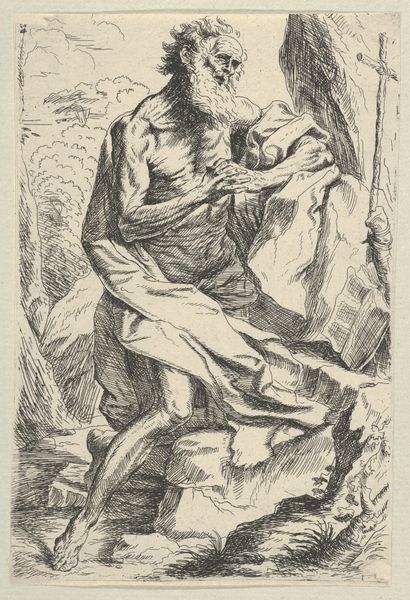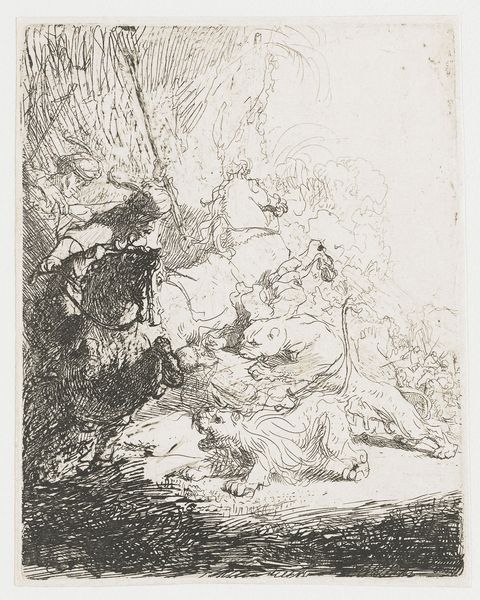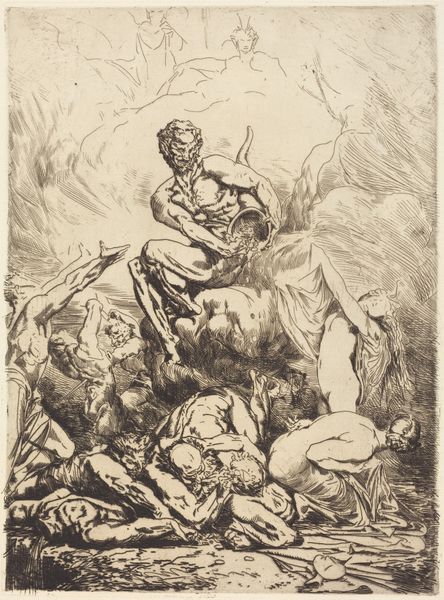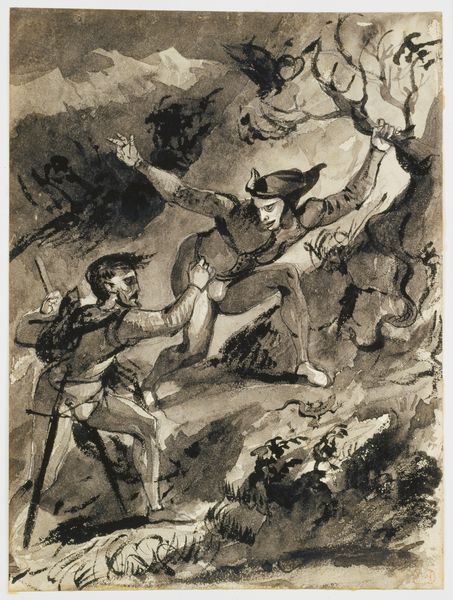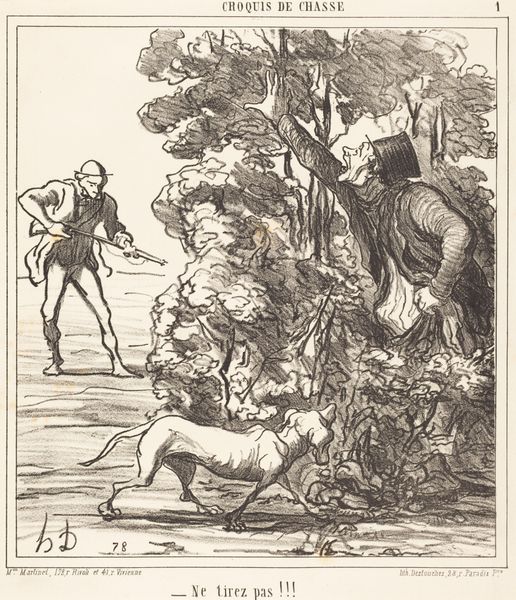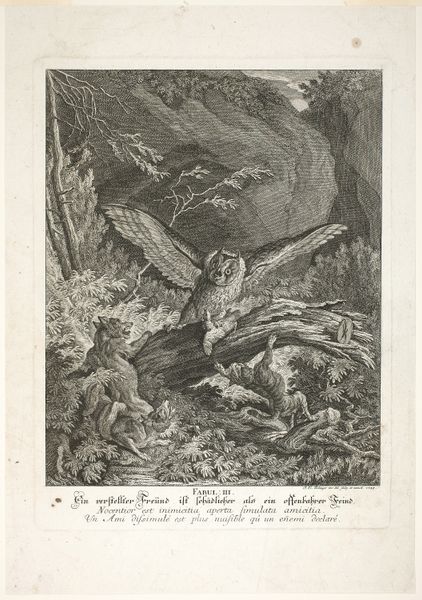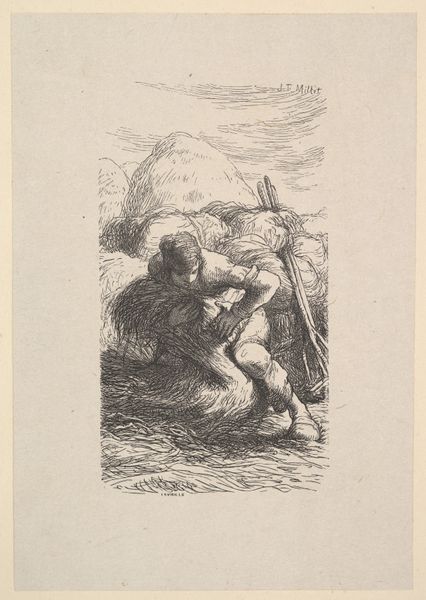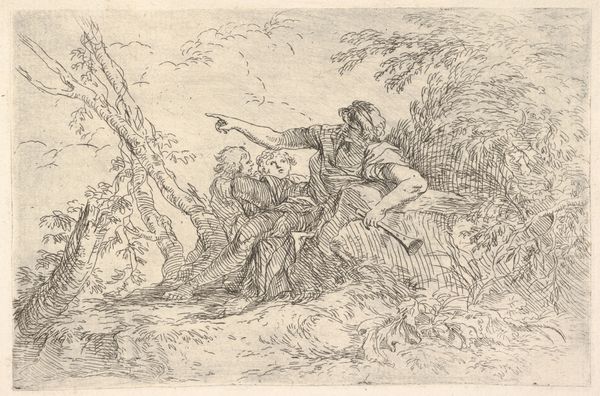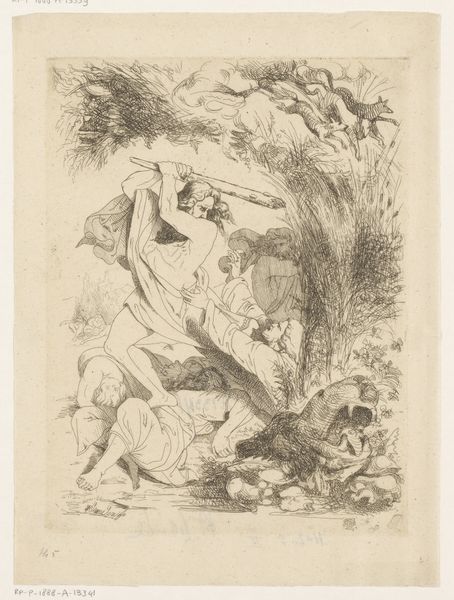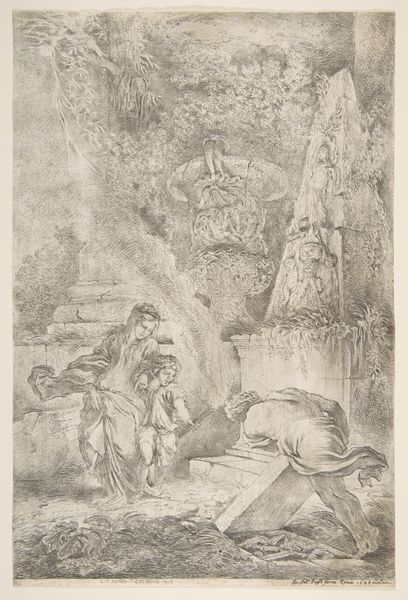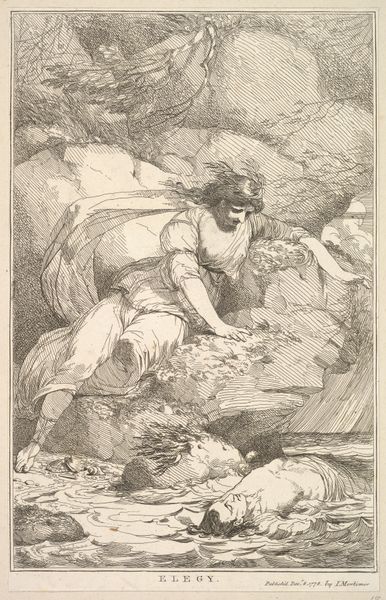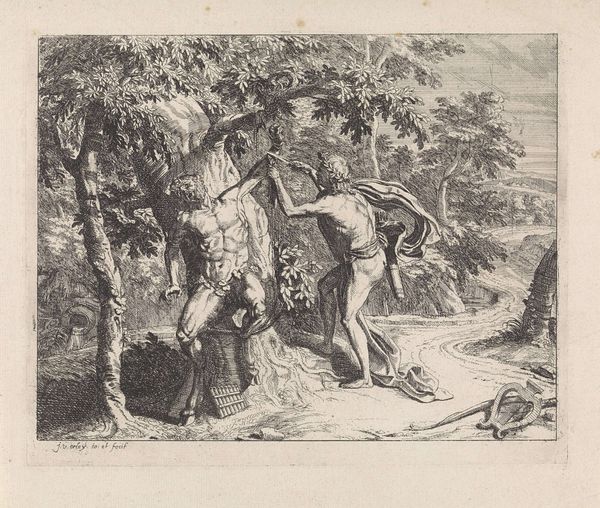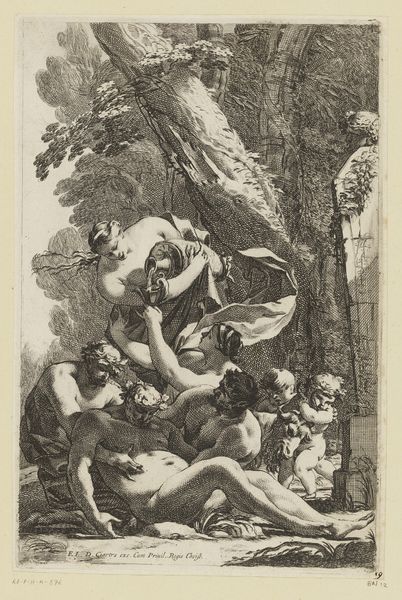
drawing, print, etching
#
drawing
#
baroque
# print
#
etching
#
landscape
#
figuration
#
history-painting
Dimensions: plate: 7 3/16 x 9 3/8 in. (18.2 x 23.8 cm) sheet: 9 9/16 x 7 5/16 in. (24.3 x 18.5 cm)
Copyright: Public Domain
Curator: Here we have Giovanni Domenico Tiepolo's 1757 etching, "Mercury Appears to Aeneas in a Dream." What strikes you first about it? Editor: That melancholy air—Aeneas looks absolutely weighed down by the world. It's all monochrome, just this delicate dance of dark lines conjuring such a mood. You almost feel bad for him, reclining there with his sorrow. Curator: Absolutely. Now, think about etching itself, and the labor involved: each line bitten into the metal, then inked, wiped, and pressed. There's an entire workshop supporting artmaking like this. It reflects a highly structured world where artistic skill is deeply intertwined with artisanal manufacturing. Editor: That's an interesting lens. But I'm stuck on the composition. The sharp angle of the tree looming over Aeneas, mirroring Mercury emerging from the clouds… it feels incredibly dynamic. It almost jolts you into awareness, much like Aeneas waking from his slumber. There's this spiritual element almost clashing with such precise lines. Curator: The crispness of the etching allows Tiepolo to juxtapose the solid form of Aeneas, the diaphanous Mercury, and the dark density of the trees, really playing up that contrast between earthly worries and godly intervention. Notice how he doesn't smooth the transitions: we see all the crosshatching creating these tonalities. Editor: Exactly! And it gives this otherwise mythological moment a certain… weight. The visual labor you mention is literally embedded in the image. We're seeing not just a god, but also all of these people who have labored to bring art like this into being, it becomes really grounded somehow. Curator: Right. We should mention also the choice of medium; Tiepolo seems almost intentionally connecting the grand history-painting style back to labor in a practical way, through mass reproduction. It opens these mythological themes up to a new public. Editor: A potent combination of craft and classical narratives. Makes you ponder about who the target audience was, and how prints like this facilitated new social and intellectual worlds at that moment in history. Curator: A lovely insight to conclude with. An object of refined elegance but so revealing about the practicalities and conditions of art. Editor: Agreed! Thank you. I'm left appreciating both the dream and the sheer human effort that manifested it for us today.
Comments
No comments
Be the first to comment and join the conversation on the ultimate creative platform.
